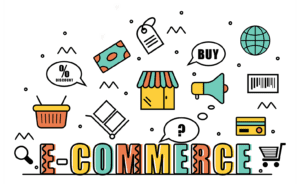Last month, The Wall Street Journal published an article regarding Amazon.com’s inability to properly police the products sold through its platform via third party sellers. While the WSJ article itself focuses on Amazon.com, it highlights a greater problem — the spike in unsafe, banned, mislabeled or counterfeit products sold by third party sellers via eCommerce platforms and a decline in the ability to adequately manage quality control through massive vendor networks.

The world’s largest eCommerce platforms like Amazon.com, eBay, and Walmart are experiencing a significant increase in the volume of unsafe, banned and counterfeit products sold under their brands by third party sellers. By opening their platforms to third party sellers, companies are seeing gains in revenue and retail market share, but at the cost of dangerous products being purchased by the unsuspecting public.
Since 2001, Amazon.com has worked to expand its network of third party sellers in support of the platform’s goal to offer more products at less expensive prices to attract more customers. Over the past decade, third party sellers have gone from representing 6% of Amazon.com’s physical merchandise sales to currently making up nearly 60% of those sales. With 49% share of the US eCommerce market, an excess of 350 million products and upwards of $42 Billion USD in revenue from third party sellers, Amazon.com is easily the leading eCommerce platform with no signs of slowing down.
The globalization of trade through eCommerce platforms has enabled unparalleled opportunities for third party sellers to engage in illicit trade and counterfeiting.
According to the 2018 Global Brand Counterfeiting Report, the amount of total counterfeiting globally reached $1.2 Trillion USD in 2017 and is anticipated to reach $1.82 Trillion USD by the year 2020, which includes counterfeiting of all equipment/products from defense equipment to counterfeiting of watches. The report also estimates that the losses suffered due to online counterfeiting globally has amounted to $323 Billion USD in the year 2017. Luxury brands, in particular, have been hard-hit with losses of more than $30 Billion USD specifically from online counterfeit sales.
The eCommerce platforms which once welcomed these sellers with open arms, are now back pedaling and trying to regain control over their platforms after a series of lawsuits from numerous well known international brands, as well as consumers.
In November 2016, Amazon.com created a brand registry to fight back against the counterfeit industry. The idea is to encourage brands — even those which do not sell products via Amazon.com — to register with the online store. Once registered, Amazon.com would require merchants to have proof of permission to sell the registered branded merchandise.
Early in 2017, eBay launched its own program to boost consumer confidence and set forth standards for operating a trusted and safe marketplace. The program, named eBay Authenticate™, is a fee-based service offered to sellers which is powered by a network of professional authenticators who inspect and authenticate the merchandise before it gets sent to the consumer.
In addition to those programs, eCommerce platforms have adopted other methods in an effort to scale back the volume of counterfeits or unsafe products.
Amazon.com in particular, reportedly uses automated tools that scan hundreds of millions of items every few minutes to screen would-be sellers and block suspicious ones from registering and listing items, using the tools to block three billion items in 2018.
Target’s new marketplace platform, announced in February 2019, is currently available to brands on through invite-only — at least for the time being. Target’s strategy is to mitigate the risk of counterfeit and unsafe products sold through its platform by carefully curating the brands invited to participate. The company also claims it requires suppliers of store-branded products to undergo additional inspections and testing beyond government standards.
Similarly, Walmart requires requires all products on store shelves be tested at approved labs, according to company documents. However, unlike Target, Walmart’s marketplace is not an invitation only platform, allowing prospective vendors to apply online.
In addition to each of the various policies or programs put in place by the individual platforms, there are also regulatory standards set forth by the FDA and other organizations like the Consumer Product Safety Commission (CPSC). Despite having multiple tools and safeguards in place, there are still thousands of banned, unsafe, and counterfeit items listed for sale through Amazon.com, eBay and other platforms.
Now, more than ever, consumers need to be alerted to the potential dangers of buying products through well known eCommerce platforms that enable third party sellers. And, while the eCommerce platforms scramble to regain control over their third party vendor networks, the old adage of ‘buyer beware’ continues to ring true — know what you’re buying, where and from whom you are buying it.
zvelo is the leading content classification vendor with a mission of making the web safer and more secure. Join us in this mission by subscribing to our blog and keep up to date on the latest industry trends, news and, most importantly, strategies for how we can partner in delivering a worry-free digital experience and safe access connecting users to applications and devices.
If you are interested in learning more about solutions which address the growing problem of unsafe, banned and counterfeit products sold through eCommerce platforms, please contact us. We welcome the opportunity for feedback and discussion!





